Soundcore Liberty Air 2 Pro review: a first-class price-to-quiet ratio
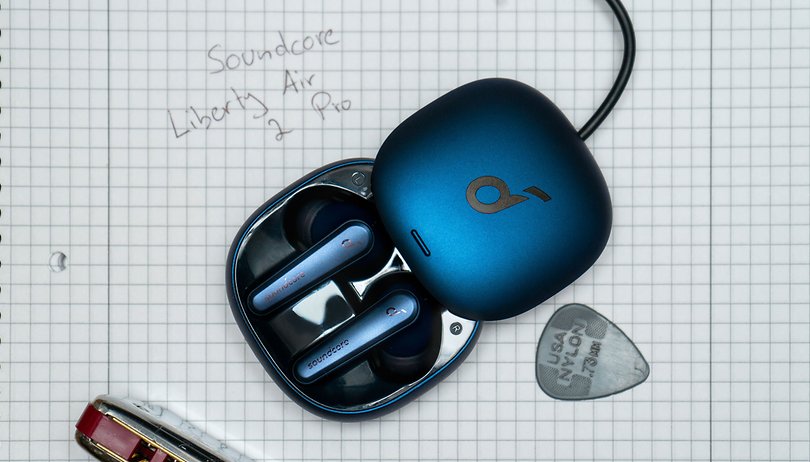

When Soundcore introduces new true wireless headphones, you should slowly but surely pay attention. Because with the Liberty Air 2 Pro, the manufacturer combines the qualities of the Liberty 2 Pro and Air 2 models for less than £130. During my review period, the wireless in-ear headphones, unfortunately, lag behind the competition in one aspect despite having many qualities compared to other models.
Good
- Good sound thanks to equalizer and Hear-ID
- Long battery life
- Effective ANC
- Compact earbuds and case
- Fast pairing with auto-play
Bad
- No multi-pairing via Bluetooth
- Only IPX4 waterproof
- ANC crackles without music (in beta)
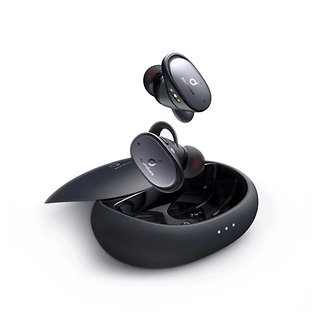
Who the headphones for?
Before I tell you about my music and podcast marathon with the new Liberty Air 2 Pro, a short disclaimer: we got our test devices before the official sales launch and I had to download the beta version of the Soundcore app to test the full range of functions. So you'll have to take the results with a grain of salt. As soon as the official app supports the new earbuds, I'll update this review.
Most fundamentally, those looking for compact true-wireless headphones with active noise cancellation and good battery life should check out the Liberty Air 2 Pro. Soundcore, as with the Life Q30 over-ear headphones, is once again positioning itself very strongly in terms of value for money, and the maths works out here as well. Because for the suggested retail price of £129.99, the Liberty Air 2 Pro offer many qualities that you'll otherwise only find in high-end models.
The AirPods Pro, for example, cost just under £250 at market launch, and even the already quite affordable Huawei FreeBuds Pro beat Soundcore by just under another 50 quid or so. I always draw a comparison to these alternatives because I've got myself an Apple fangirl in Johanna and a headphone nerd in Antoine as test partners. They each got their own versions of the headphones, as Soundcore sent us several models.
Differences to the well-known models
If you're already Soundcore connoisseurs, I still want to briefly situate the Liberty Air 2 Pro in the manufacturer's lineup. Because as the naming already suggests, the new true-wireless headphones are a hybrid of the models Soundcore Liberty 2 Pro (£120) and Soundcore Air 2 (£90).
The charging case with its sliding mechanism is reminiscent of that of the Liberty 2 Pro, and from here Soundcore, fortunately, transfers wireless charging via QI standard and the creation of a custom Hear ID. There's a noticeable difference, however, in the design of the Earbuds themselves. Because while the Liberty 2 Pro's earbuds are more reminiscent of the Sony WF-1000XM3 and thus look comparatively chunky, the new Air 2 Pro's are understated and stalky.
The design of the headphones themselves, then, Soundcore has taken more of a cue from the Liberty Air 2. These are more along the lines of Apple's AirPods design, with a small stem sticking out of the ear. Again, there was already Hear ID, but the case has a folding mechanism - the familiar floss analogy isn't too far off.
Quite new for a true-wireless headphone from Soundcore, however, is the integrated Active Noise Cancelling. Active Noise Cancelling is finding its way into more and more headphones, and most recently in the Soundcore cans David was able to review, the Life Q30. Does the ANC work just as well here or is it even better?
What I like about the Soundcore Liberty Air 2 Pro...
The sound quality
Let's get right to it, because before it gets quiet, let's get loud. For my reviews of headphones, speakers, and other audio devices, I always like to submit playlists of the music I used to measure the sound quality of each device. To listen later, you'll need a Spotify playlist or you'll enter the tracks on YouTube.

For my playlist, I tried to get a good mix of genres and also make sure that the song in question also has good sound quality, so preferably no live recordings or noisy record digitals. Before we dive deeper into the songs, a little bit about the technique.
Briefly about the technology:
Soundcore uses drivers with its own Purenote technology in the Liberty Air 2 Pro, which measure 11 millimeters on average. The technology is said to improve the sound of the drivers thanks to 10 hardened nanosheets of an unnamed material that are applied in layers to the speaker cone.
This is said to provide more clarity and more precision in the output of sound waves. But with Soundcore giving very few details in the lead-up to the presentation, and not even a frequency range, for example, the technology is providing a few more expectations at best.
As soon as I can find out more about the Liberty Air 2 Pro's technical specifications, I'll add them to the review, of course.
Practical listening test
Finally, let's get to the sound test of the headphones and the Spotify embed I mentioned earlier. You can click on the individual tracks here:
Inca Roads by Frank Zappa
Let's start with the track "Inca Roads" by Frank Zappa, as it tells a lot about the dynamics and about the clarity of headphones right in the first bars. Here I usually pay attention to how clearly the individual instruments can be heard under the synthesizer sound changing from left to right. The Liberty Air 2 Pro do the job well. Ruth Underwood's vibraphone parts are well audible in the background and also the crash cymbal right at the beginning remains recognizable for a long time.
With the equalizer already adjusted to my ears and preferences, the bass track, as well as the bass drum, stand out well. As soon as the vocals start, I'm also happy about how beautifully the headphones resolve the slightly offset, polyphonic vocals in the stereo sound and in the beat. You can almost feel the breathed vocals on your ear.
Inca Roads is very multi-layered and headphones are very well suited to perceive this multi-layeredness. Since Frank Zappa was obsessed with maximum recording quality, ambiguities can't be explained in the recording either. Kudos to Soundcore!
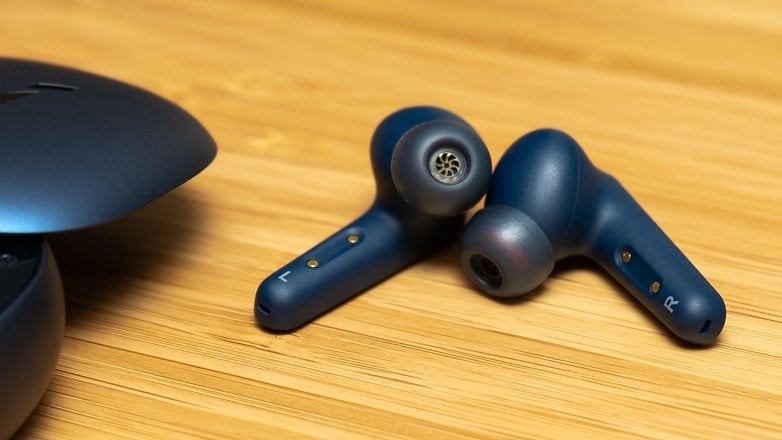
In the song "Knots" by Gentle Giant, the same becomes even more apparent. The confusing xylophone sounds literally tumble through the room as if the musicians were standing behind you. When the whole band enters at 1.40 minutes, the width of the sound becomes clear.
Autumn Leaves by Ryo Fukui
The clarity of the headphones can also be heard in Ryo Fukui's interpretation of the jazz standard Autumn Leaves. His trio consists of himself on piano, a double bass player and a jazz drummer. In the recording, the keys are evenly distributed between both ears, while the double bass player is more on the left channel and the drummer more on the right.
The positioning of the musicians in the virtual space is managed well by the headphones and they reproduce nuances particularly nicely. The occasional caress of the drumstick over the drummer's ride cymbal or the light strokes on the double bass (especially during the solo from 4.20 minutes). Fun!
Xanny by Billie Eilish
Of course, we don't just want to hear grandpa music where the musicians are quite colorful across the spectrum from lows to mids to highs. Billie Eilish likes to overdo it with the slant to the bass and this is a good place to see if the headphones are overdriving. The song Xanny starts with an ultra-low bass, with quite nuanced bass hits in between. The Liberty Air 2 Pro do a good job here and for me personally, the headphones almost hit the cerebellum too hard. That's what they say in professional circles, isn't it?
Once the intro is over, Billie turns it up a bit more and here she and her brother Finneas deliberately work in a gain range where the music sounds overdriven. Despite stylistic devices, however, I've heard speakers that could still clearly separate the musician's voice here. That doesn't work 100 per cent with Soundcore. However, the track is also quite difficult as it pushes the listener to the breaking point in addition to the equipment. When trying it out, I naturally turned the headphones up full and worried a bit about my health.
Giorgo by Marauder - Daft Punk
Also bass-heavy but certainly a little cleaner produced: Giorgo by Marauder by Daft Punk. On the electro track, the headphones are convincing in the bass department, even when I deviate from my preference for treble and midrange in the equalizer and go full bass. While the bass doesn't tend to overdrive, I imagine it may even be too little for some listeners.
Antoine describes himself as more of a bass fan and would have certainly cobbled together a more hip-hop-heavy playlist. By default, the bass on the headphones wasn't potent enough for him and from his experiences, he spoke of a default configuration that should please most users. But that's no big deal, because as with the Life Q30s, Soundcore gets a lot out of them through equalizers.
Equalizer and Hear ID
In the Soundcore app, which I had to run in beta due to the headphones being made available before their official release, you'll find an 8-band equalizer. This lets you adjust the frequency range at 100, 200, 400, 800, 1,600, 3,200, 6,400, and 12,800 hertz from +6 to -6 decibels. The equalizer is effective, but it doesn't provide any presets for the overwhelmed. However, you can create your own presets and save them for eternity.
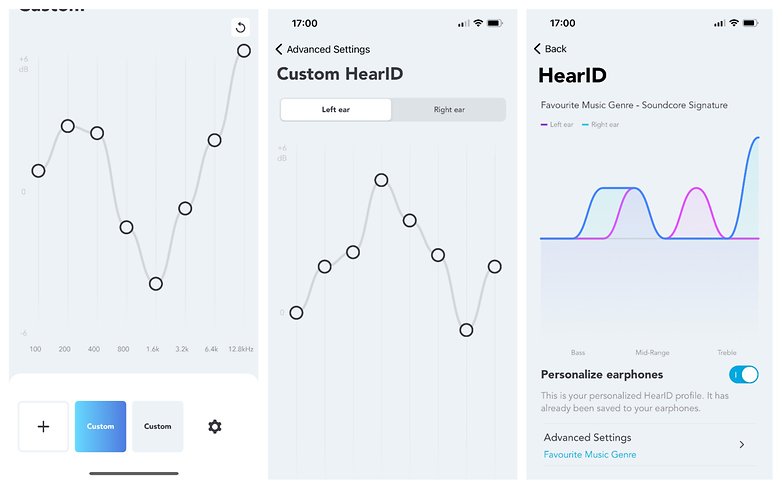
As an alternative to the equalizer, Soundcore is pleased to offer its Hear ID feature in the Liberty Air 2 Pro. Like a medical hearing test, to set it up you have to perceive sounds and indicate when you can no longer hear a sound. The procedure takes just under five minutes and is done for each ear individually.
Coincidentally, I took a medical hearing test just under a year ago and there were no abnormalities there. My hearing is above average, my doctor said, and accordingly I could hear 95 per cent of the sounds in the Hear ID check. My equalizer was therefore quite flat, but the sound quality improved noticeably compared to the standard configuration.
Especially since Soundcore doesn't stop there: based on your Hear-ID, you can once again adjust the settings in the 8 frequency bands to your own preferences. Then even for each ear individually and here you will find 21 presets ranging from rock to spoken word to podcasts.
The Soundcore app is really well-designed and fun to use with all the settings! Headphone newbies have the opportunity to develop their own preferences and don't have to get used to the bass-oriented presets of many other manufacturers.
Comfort and fit
But conversations with my colleagues and friends show time and time again that sound quality isn't even the main thing anymore when it comes to headphones. The digital maniacs of our time (like me!) like to have headphones in their ears all day long. During the test period, I got just under 10 hours of use in one day during a music and podcast marathon.
That's not always comfortable with in-ear headphones like the Liberty Air 2 Pro. I was able to enjoy a good midpoint of comfort and support with the pre-installed attachments. Even while jogging, I never felt like the headphones were slipping out of my ear, and after some acclimation, I was even confident enough to bend over the sink with the Soundcore Liberty Air 2 Pro.

Johanna, on the other hand, couldn't find a single one in the eight pairs (!) of included attachments (together with the pre-installed ones, that's nine) that really wanted to fit her. Antoine also felt that the Liberty Air 2 Pro didn't offer enough support and wished for either larger ear tips or an additional holder.
Still, you have to give Soundcore credit for including an above-average number of attachments. However, these are apparently all made of silicone rather than memory foam. The latter conforms a little better to the wearer's ear canal, while the silicone attachments rely a little more on the pressure created when plugged in.
Battery life
During my 10-hour wearing marathon, I only had to put the headphones back in the charging cradle once. That's because the battery life of just under six hours when used in the ear, which Soundcore told us in advance, is also realistic in practice. The volume was moderate and ANC was mostly active.
With the charging case, you can recharge the headphones a full three times. Anker also talks about a fast charging function, which should allow you to charge the headphones for a full two hours after a ten-minute charge. Whether that refers to putting the earbuds in the case or plugging in the charging case via its USB-C port is hard to tell without more details.
However, I'm assuming that Soundcore is charging the case - but the headphones themselves also charge sufficiently quickly. Once I put the headphones back when not in use and then needed them again, they were sufficiently fully charged to not have any issues. Since most users probably put the headphones in the charging case every now and then between uses, usage is quite rarely interrupted by the monotonous "Battery Low" announcement.
Compact case with wireless charging
A few words about the case! Measuring just under 6.5 x 6 x 3 centimetres, this is small enough not to take up much space in your pocket. To remove the individual Earbuds, you have to slide the lid backwards, which is a bit unusual at first, but turns out to be very practical after a while. Because it's no problem to slide the case open with one hand and close it again.
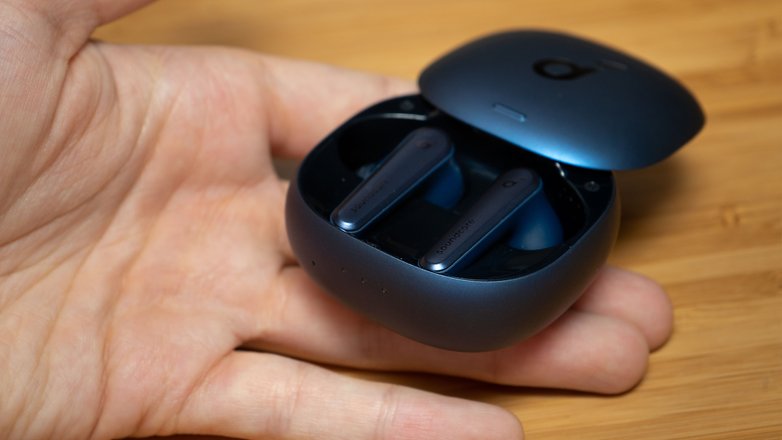
As a little extra, the charging case supports wireless charging using the Qi standard. For the test, I placed it on a smartphone cradle and already the three LEDs on the front indicated charging. This is even more convenient if your smartphone supports reverse wireless charging and you can charge it by placing it on the phone.
Connection to your mobile phone
This review is getting too long, but I still don't want to miss one detail. Connecting the headphones to paired smartphones is almost "Apple-esque". Slide on the charging case and the headphones connect to the phone. Then you put both headphones in your ear and thanks to the wear detection, the music is also played directly. The whole thing works surprisingly well on both Apple's iOS and Android, and begs the question, why can't this always be the case?
It's also nice that the wear detection works via pressure and not via a proximity sensor. This means you can put the headphones on the table or in your pocket when in mono mode, i.e. when wearing a pair of headphones, and not have to worry about the music going out all the time.
Telephone calls
I also made a lot of phone calls with true wireless headphones. The call quality was very good on my end and the other party didn't even notice that I was using the headphones instead of my mobile phone. The only thing that bothered me a little was that I couldn't hear my own voice as well due to the construction.
What I don't like about the Soundcore Liberty Air 2 Pro...
The ANC (subject to change)
The Liberty Air 2 Pro are Soundcore's first in-ear headphones with active noise cancellation. Expectations were less high due to my experience with the Soundcore Life Q30. In my opinion, the over-ear headphones offer rather mediocre ANC.
However, the active noise cancellation of the two devices is not really comparable, if only due to their construction. Because the Liberty Air 2 Pro offer as in-ear headphones already a basic passive shielding, which was normal in my ears and too low in Antoine's ears. However, if you then switch on the ANC, it results in good noise cancellation in my opinion.
This is effective enough that I could no longer understand loudspeaker announcements in the supermarket. Even traffic noise during a short photo tour was reduced to a minimum with the music playing softly. As I write this review, I have the in-ear headphones in my ear as well and the nervous typing on my Logitech MX Keys is less than half as loud.
However, with ANC active and no musical feed, I do hear a clearly discernible crackle. Especially on the left ear, it sounds like a small fire is burning in my ear and it is this one-sidedness that bothers me. Maybe the crackling will be eliminated by the first final firmware update. I'll test it out and adjust this article with either good or bad news.
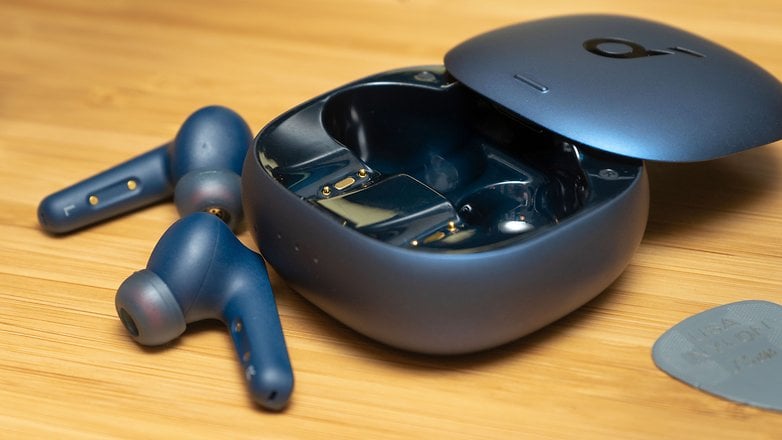
Combining the ANC along with music, I was able to effectively block out the surroundings very well. Not even the ringing of a parcel carrier could I hear and even to sudden noises like the honking of a car, the headphones responded reliably. It's nice to see that ANC in the price range around 100 euros (the headphones will certainly fall quickly in price) can now be quite good. Only for complete silence without music it is probably not quite enough.
The Transparency mode also pleases me so far in any Anker ANC headphones. Here I personally like it when the environment already almost shines through like a hearing aid and this feeling is just too weak for me. The dedicated mode for voices also doesn't have much of an effect in my estimation. Nothing for hobby spies at the neighbouring table or at the supermarket checkout.
Not quite my tempo...
No multi-pairing via Bluetooth
What I very sorely miss about the Soundcore Liberty Air 2 Pro, however, is the ability to pair multiple Bluetooth devices at once. After all, being able to pair the Life Q30 with both your phone and notebook makes home and work life much easier. So Soundcore already has the technology to detect and automatically switch playback on two devices.
Why the feature doesn't exist in the new True Wireless headphones is beyond me, and that's possibly one of the big criticisms. Because it means Soundcore is releasing headphones that lack a feature that Apple has long been able to do, and that Samsung is rumoured to be including in its new Galaxy Buds Pro.
Annoying self-promotion in the app
Shockingly, I also found that Soundcore advertises its own products in its own app. From the notification icon, you can see announcements like the January 12 unveiling of new in-ear headphones (I wonder which ones they could be? - Just kidding). It's not a big deal and may still serve as a news channel for Anker fans.

More annoying is the little tab you sometimes find on the Soundcore app's home page. This is also where you'll reach product announcements, and frankly, after buying one product, I don't want to be tricked into buying its sibling. While you can click away the tab, it always comes back.
Antoine criticizes the headphone controls
One fairly minor detail that Antoine still brought up in the pre-release interview: While many headphones, including the Life Q30 again, announce which ANC mode is currently active, the Liberty Air 2 Pro merely emit a short beep. Thus, you have to guess a little bit whether you now use the transparency mode, which you first have to hang in the app in the ANC loop on the headphones, or the ANC.
Perhaps this will also be fixed by a software update. Because already currently the control of the headphones is very customizable to your needs. For example, instead of ANC, you can also activate the voice assistant of your phone by pressing for 2 seconds and control ANC only on the phone.
Not particularly waterproof
One noticeable drawback of the Liberty Air 2 Pro is their low certification against water. Soundcore awards the headphones IPX4 - the "X" stands for a not further certified density against dust and the 4 indicates moisture protection against splashing water from all sides.
Even though devices are usually a bit more resistant than the certifications of the manufacturers promise, over my Marshall Major III, for example, I have already driven in the car and sunk them in the bathtub - still work, you lose the carefree when using them in the rain or in the bathroom.
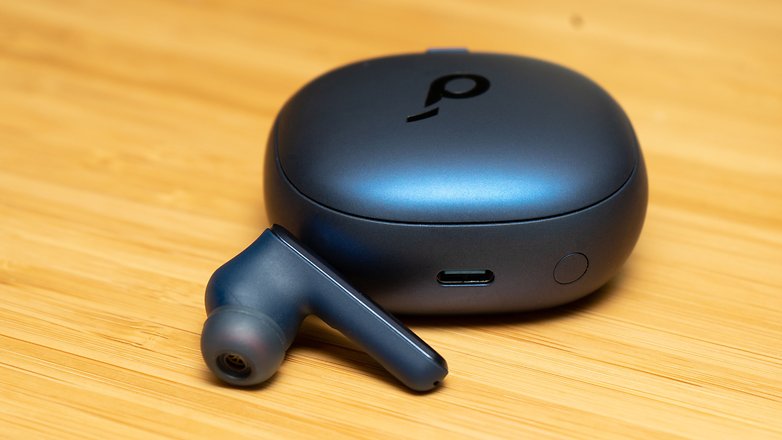
According to the manufacturer, the charging case is not protected against water at all, so even after taking out the headphones, you have a bad feeling when the earbuds are in the case in your pocket. Hand on heart, I have unfortunately dropped the case including headphones into a glass of water. Since idiots are usually very lucky, at least nothing happened. But you are not idiots like me!
Final verdict
In summary, Soundcore delivers a very good first impression with the Liberty Air 2 Pro. With the right ear, the ANC earbuds offer a very high wearing comfort and the necessary support to stay in the ear even during sports. The sound quality is very good, especially due to the effective equalizer and the analysis of your "Hear ID". While bass and treble can be adjusted, the headphones also cut a good figure in terms of clarity and resolution. We'll have to wait for exact details on this, though.
The ANC is also good along with music and effectively shields you from sounds from the environment. Only for ANC-only do the headphones currently still have too much noise - a circumstance that could perhaps change with software updates after the official release. Last but not least, Soundcore once again has the advantage of being part of Anker. The battery life is outstanding with up to 7 hours of continuous use. The AirPods Pro, for example, already run down after 3 to 4 hours.
In the first impression, the headphones are completely convincing - at the relatively low price of £129.99, I can forgive the little advertising in an otherwise very good app and the low IP certification.
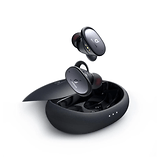








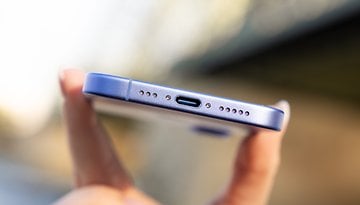
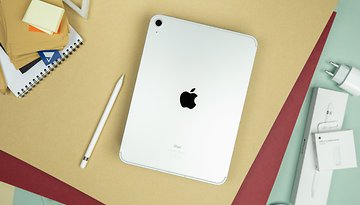
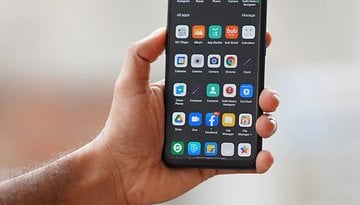
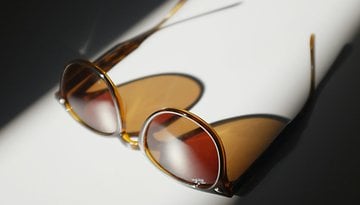


I've found this brand a reasonable value, but not something that really disappeared in my ears for comfort, fidelity and general usage. While I think they're not great, the original wired Airpods are what I find the most useful and they're cheap. Quality and durability leave something to be desired but they work well and are comfortable to me in ways these sorts aren't.
There's a lot of subjectivity involved in how one prefers to interact with headphones. For 40 years of my life, I've used 1/8 headphone jacks since the first walkman and single ear mono listening prior to that. Wires don't bother me because I've lived with them long before there was a different option.
Wireless is convenient, but the codecs and amplification are terrible quality.